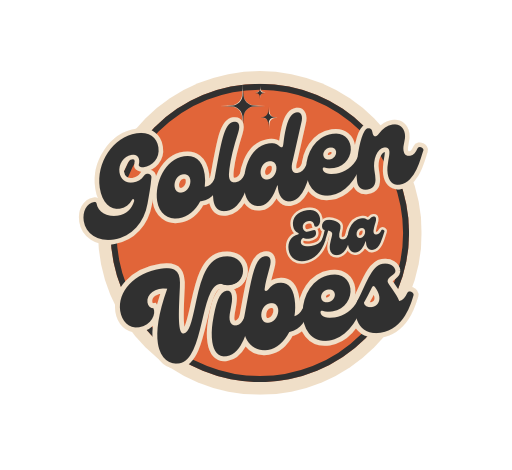15 Facts About Mood Rings That’ll Take You Straight Back To The ’70s
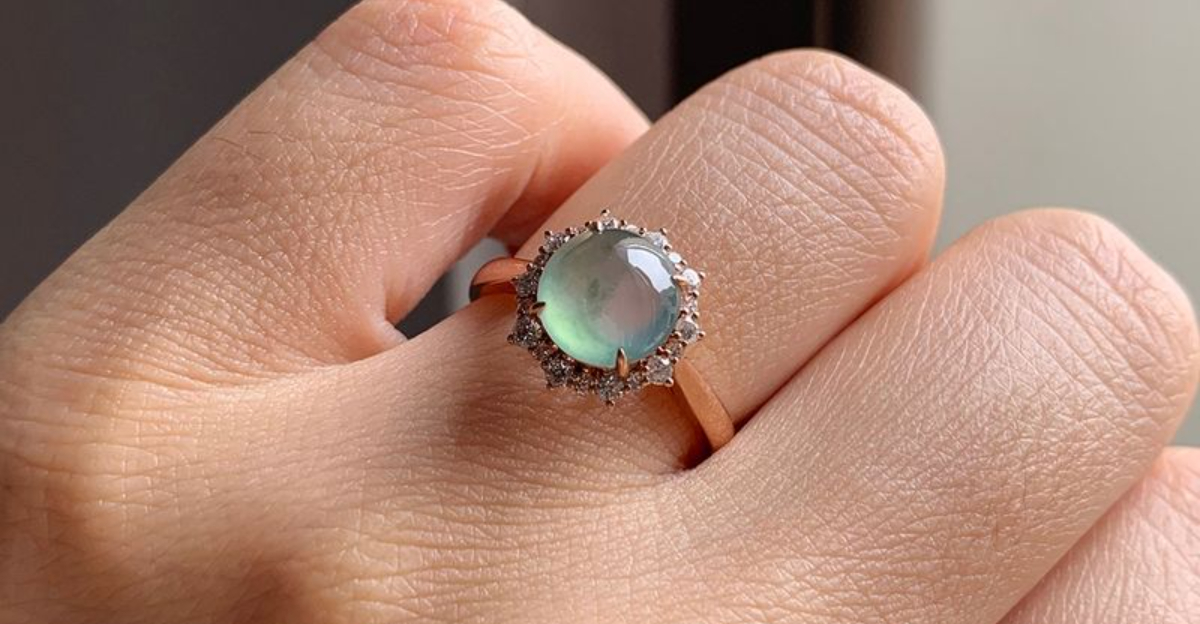
Mood rings—those mesmerizing little trinkets from the 1970s—were far more than just flashy accessories; they were wearable windows into your soul… or at least your body temperature.
First introduced in 1975 by inventors Marvin Wernick and Josh Reynolds, mood rings quickly skyrocketed into pop culture fame, capturing the groovy spirit of a generation captivated by emotions, vibes, and a hint of mysticism.
These rings featured thermochromic liquid crystals that changed color in response to heat, supposedly reflecting the wearer’s emotional state. One moment you were calm and collected in cool blue, the next—anxious and agitated in amber.
Whether or not they truly read your “mood,” they offered a playful, colorful lens into self-expression and quickly became must-have items for teens and trendsetters alike.
So slip one on, hold out your hand to the light, and join us as we explore 15 fascinating facts about the iconic rings that made emotions wearable.
1. They Hit Stores in 1975
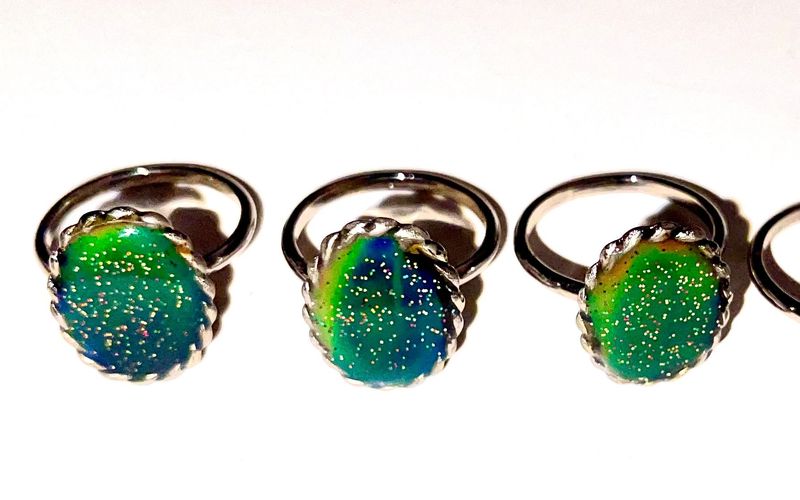
Mood rings, invented by Marvin Wernick and Josh Reynolds, made their grand debut in 1975. They were an instant hit, capturing the imaginations of those who fancied themselves emotion detectives. People flocked to stores, eager to get their hands on this new sensation. As I remember, my parents told tales of those first days when they rushed to malls just to see what color their emotions might reveal. The excitement was palpable, much like waiting for a rock concert ticket.
These rings weren’t just jewelry; they were social icebreakers. Imagine the conversations they sparked, each color a potential topic. I can almost hear my mom saying, “Your ring’s green? So is mine! We must be on the same wavelength.” Mood rings truly were small bands that held the power to connect people in unexpected ways.
Even today, they continue to intrigue, a nostalgic nod to a time when emotions seemed as simple as a color change.
2. They Were Basically Liquid Crystal Thermometers
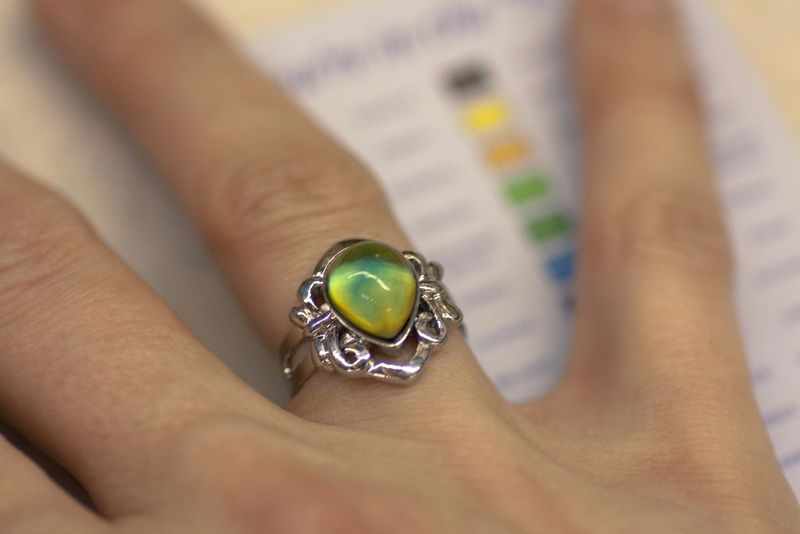
Mood rings were essentially liquid crystal thermometers wrapped around your finger. The liquid crystals inside the ring responded to temperature changes with a vibrant dance of colors. It’s a bit of science meets spectacle, a perfect ’70s combination. Remember the joy of seeing your ring shift from blue to green like a tiny lava lamp? That’s the magic of liquid crystals at play!
The “mood” part was pure marketing genius. It gave everyone license to wear their “emotions” on their sleeve—or rather, their finger! These rings were more about temperature than temperament, but who cared? It was all part of the fun. Kids would argue passionately over what each shade meant, each with their own theory.
In today’s tech-savvy world, it’s almost quaint to think of such simple science causing such a stir. Yet, that’s precisely why mood rings remain fondly remembered. They embody a time when imagination ran wild, and science felt magical.
3. The Colors Changed with Temperature, Not Emotion

Despite what the marketing might have suggested, mood rings changed color with your finger’s temperature, not your feelings. Cold hands, blue ring; warm hands, maybe a cheerful green or blue. I remember my own ring turning ominously dark when stepping out into the winter chill. Apparently, I was “stressed,” but I was just freezing!
This temperature trickery led to countless debates among school friends. Was black truly the color of doom, or just a sign you needed a hand warmer? It was all part of the allure, the mystery. Even as we laughed about the supposed mood readings, we couldn’t resist checking our rings repeatedly throughout the day.
In many ways, mood rings were like emotional weather forecasts—highly unpredictable and often wrong, but endlessly entertaining. They were the perfect blend of science, psychology, and style, capturing the whimsical spirit of the ’70s like nothing else.
4. Blue Meant You Were Chill
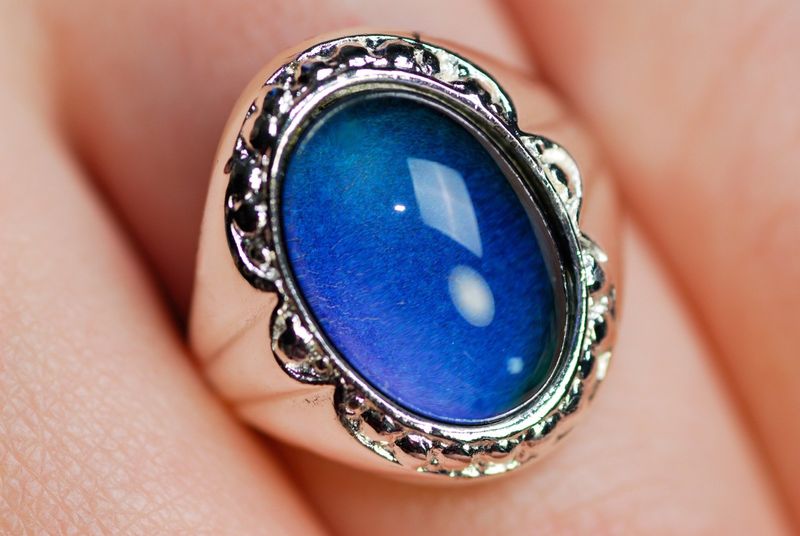
The color blue on a mood ring was supposed to signal that you were calm, happy, and vibing with life. It was the color of zen, the shade of tranquility. Whether you were genuinely relaxed or just sitting under a warm sunbeam didn’t matter. Blue was the ultimate goal.
I recall the joy of seeing that azure hue after a heated game of hopscotch. It was like a pat on the back, a silent nod from the universe saying, “You’re doing just fine.” Blue was the badge of the cool, the collected, and the content. It was everyone’s favorite color, the mark of a good day.
In a world without mood rings, we might rely on meditation apps or yoga classes to find our chill. But back then, all we needed was a little ring and a bit of warmth. Blue might have been just a color, but it felt like a reward.
5. Black = “Stressed” or “Dead Inside”
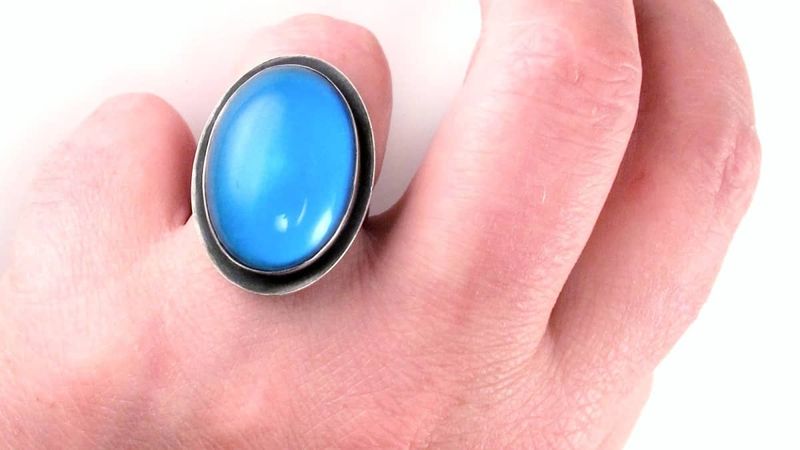
When your mood ring turned black, it was either a dramatic proclamation of stress or a simple indication that your hands were too cold to register a warmer hue. Black was the “dead inside” color, but it often meant you’d just come inside from the cold.
I remember rushing into the kitchen, clutching a cup of cocoa, watching my ring hopefully. Sometimes it stayed black, a stubborn reminder of the chill, until I was toasty warm again. We jokingly called it the emo color before “emo” was even a term.
Black was the ring’s way of saying, “Take a break, warm up.” While it seemed to scream doom, it often elicited more giggles than gasps. Mood rings played with our perceptions, turning the mundane into melodrama, a quirky reminder of how easily our “emotions” could change with a draft.
6. They Were a Huge Fashion Craze

Mood rings were the epitome of ’70s fashion, a must-have accessory that transcended age and style. From disco divas to casual teens, everyone sported one. I remember seeing these rings everywhere—from the bustling mall kiosks to cereal box prizes. It was as if the world had agreed on one essential item.
They were the perfect complement to any outfit, adding a pop of color and a dash of mystery. It wasn’t just about matching your clothes, but matching your vibe. Mood rings became cultural currency, as essential as bell-bottoms or platforms.
Even now, when I spot a mood ring, I can’t help but smile at its nostalgic charm. It’s a blast from the past, a reminder of a time when fashion was fun, fearless, and a little bit fantastic. They were more than just rings; they were symbols of an era that celebrated individuality and imagination.
7. You Couldn’t Get Them Wet
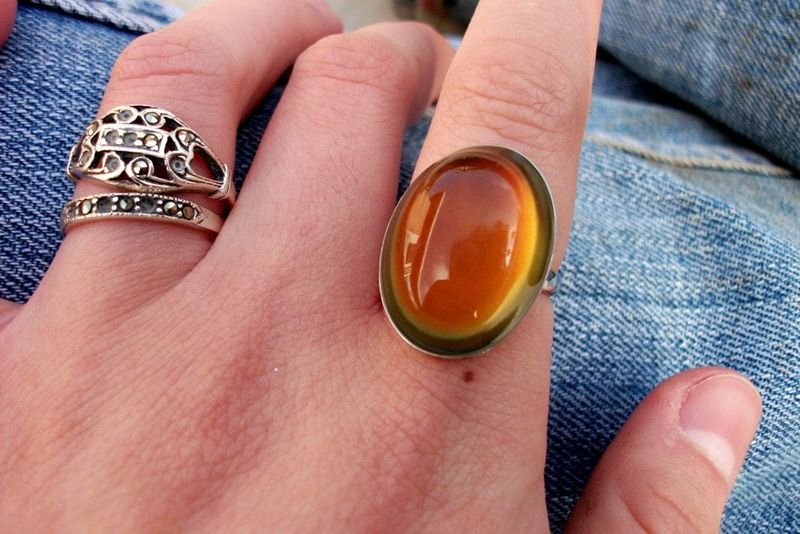
Water was the kryptonite of mood rings. A splash during dishwashing or a dip in the pool, and your ring’s colorful magic would vanish, leaving behind a sad gray band. I remember the horror of accidentally wearing mine in the rain, watching the colors swirl and fade like a watercolor painting.
The fragility of mood rings added to their allure. They were delicate treasures that required care, much like a delicate friendship. It was a lesson in responsibility, a reminder to handle with care. “Keep it dry,” I’d remind myself, echoing a mantra passed down by wise ring wearers before me.
Despite their vulnerability, mood rings were cherished. Protecting them became part of their charm, a testament to their special place in our lives. They taught us to be mindful, to cherish the things we love, and to avoid puddles at all costs!
8. Everyone Had Their Own Mood Color Chart

Back in the day, every mood ring enthusiast had their own interpretation of what each color meant. Personal mood color charts were all the rage, fashioned with creativity and a pinch of artistic flair. My friends and I would exchange ours at school, each chart more elaborate than the last.
These charts were like emotional horoscopes, whimsical and deeply personal. “Green means you’re a genius!” one might claim, while another would insist, “No, green is for indecisive thinkers.” The fun lay in the debate, the endless possibilities.
These colorful guides were as diverse as the community that wore them. They added a layer of personal touch to the mood ring experience, making it truly unique for each wearer. In a world driven by mass production, these little handmade charts were a testament to individuality and creativity.
9. Kids Would Compare Rings Like Emotional Pokémon
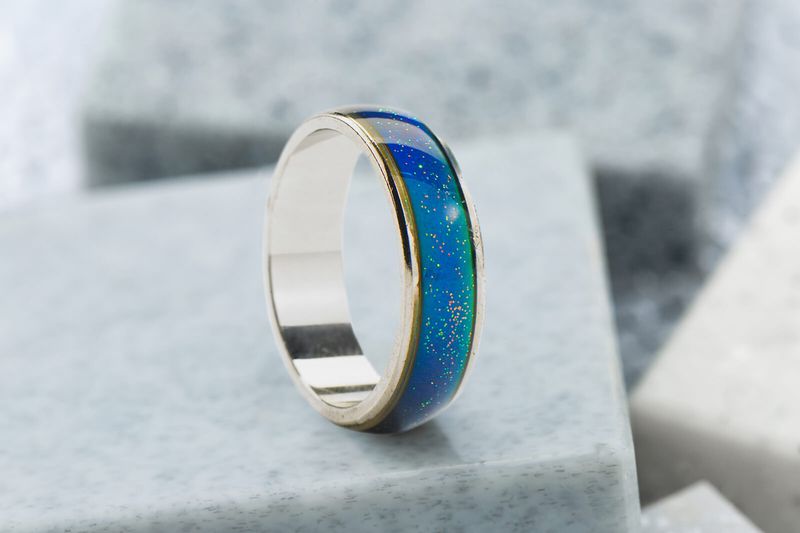
Mood rings turned schoolyards into vibrant arenas of emotional exploration. Kids compared their rings with the same enthusiasm one might expect from Pokémon trainers. “You’re orange? I’m purple! What does that mean?!” echoed through playgrounds.
I remember proudly displaying my ring, a badge of emotional prowess. It became a playful competition, who had the best “mood,” the most interesting color. The laughter, the camaraderie—mood rings were more than jewelry; they were social catalysts.
These tiny accessories sparked conversations, created friendships, and sometimes even rivalries. Looking back, it’s clear mood rings were a powerful tool for connection. They brought us together in our shared quest for self-discovery, wrapped in a playful veneer of color and emotion. It was a simpler time, where feelings were as easily changed as a shift in temperature.
10. They Were Worn by Everyone from Hippies to Disco Queens

Mood rings transcended social circles, worn by everyone from laid-back hippies to glamorous disco queens. They were the ultimate accessory, uniting diverse communities with a shared love for this tiny emotional oracle.
I vividly recall my aunt, a proud disco diva, flaunting her mood ring on the dance floor. Its colors reflected the spinning lights, creating a spectacle of chromatic wonder. Meanwhile, my neighbor, a bohemian at heart, wore hers as a statement of peace and love.
These rings were a melting pot of style and sentiment. They didn’t care who you were, only that you wore them with flair. Mood rings embraced the spirit of the ’70s—free-spirited, expressive, and unashamedly bold. They allowed everyone to partake in the fun, one color-changing moment at a time.
11. Some Came in Big, Chunky Settings

Mood rings were not just about the colors; sometimes, it was all about the setting. Big, chunky designs were a hallmark of the era, turning these rings into statement pieces. Mine was a family heirloom, passed down with its own legend.
These large settings were as much a part of the fashion as the mood they claimed to reflect. They were bold, unapologetically extravagant, and perfectly in tune with the flamboyant style of the ’70s. Wearing one felt like donning a crown.
Chunky mood rings made their presence known. They weren’t just accessories but declarations of personality and taste. In today’s minimalist world, these rings stand as a reminder of a time when more was more, and each ring was a treasure trove of stories, style, and sentiment.
12. They Were Sold as “Biofeedback Tools”
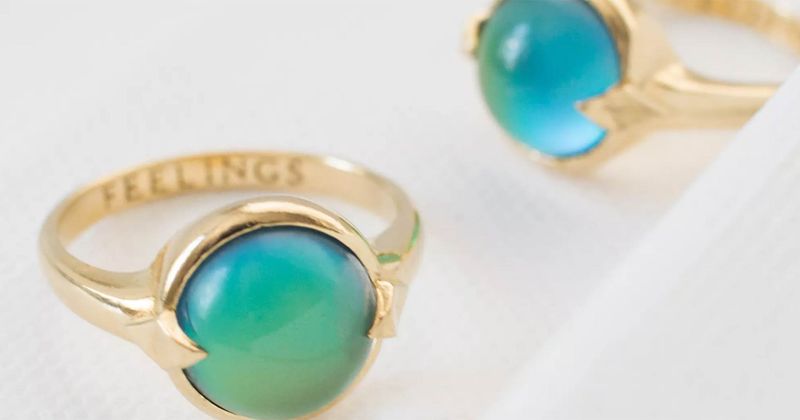
Mood rings were marketed as “biofeedback tools,” claiming to provide insight into one’s emotional state through color changes. This pseudoscientific allure added an extra layer of mystique. I remember the ads promising self-discovery at the turn of a hue.
Despite the dubious nature of these claims, people were hooked. The idea of a wearable mood detector was too fascinating to ignore. It was the ’70s, after all—a time of exploration into vibes, energies, and inner peace.
These marketing tactics were as colorful as the rings themselves. They tapped into a collective curiosity about the mind-body connection, making mood rings not just fashionable, but seemingly meaningful. It was a clever mix of style and science fiction, wrapped up in a tiny, ever-changing circle of color.
13. They’d Sometimes Get “Stuck” on One Color
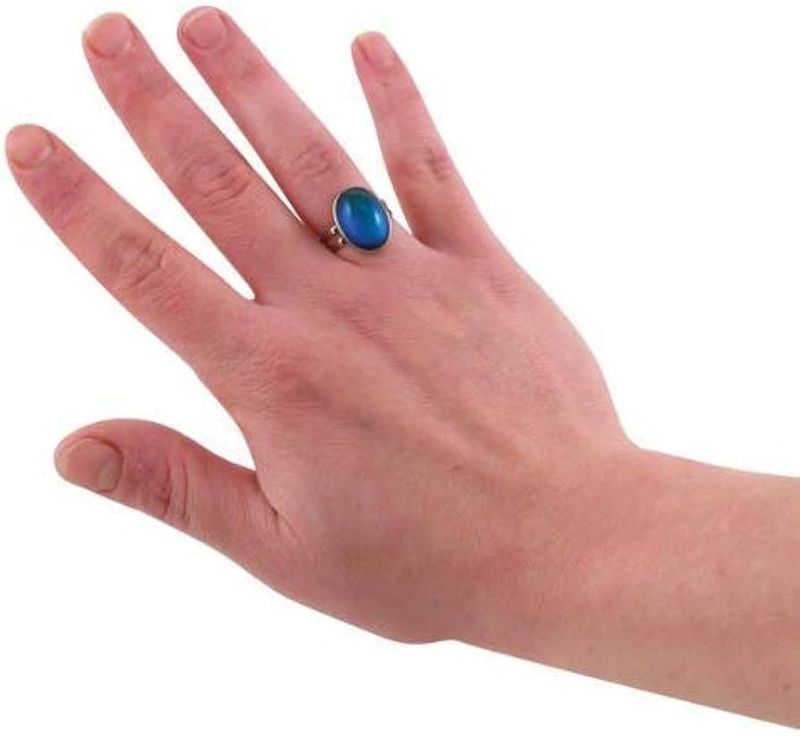
Mood rings, with their playful promise of emotion-telling, sometimes got “stuck” on one color. It was usually green, the hue of “average mood” or “contentment.” Remembering mine, eternally green, it seemed to suggest a life of stability—or maybe just a faulty ring.
Friends would joke about being perpetually in one mood, the ring’s stubbornness adding to its charm. It became a running gag, a humorous footnote in the mood ring saga. “Feeling green today?” we’d quip, chasing the ring’s elusive promise of emotional insight.
Though it might have been a design flaw, the quirkiness only endeared mood rings further to their wearers. They embodied the unpredictable nature of emotions themselves, as unpredictable as a ’70s disco playlist. Mood rings, even when flawed, reminded us of the beauty in imperfection.
14. They Made a Comeback in the ’90s
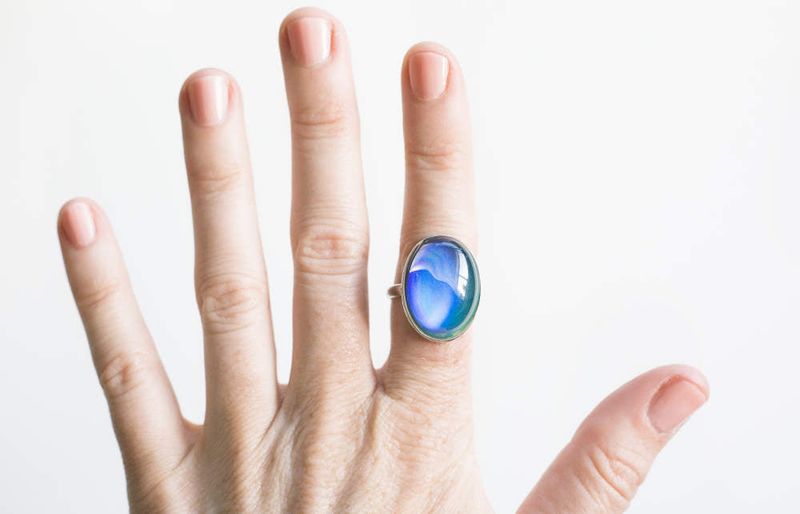
The ’90s saw a revival of many ’70s trends, and mood rings were no exception. They made a triumphant return, gracing the fingers of a new generation eager for a taste of retro magic. I remember my own discovery of these rings, as they became the talk of the middle school.
The appeal was timeless. Mood rings offered a colorful piece of nostalgia, a nod to an era that celebrated individuality and expression. They were worn with the same enthusiasm as before, proving that some fads are too fun to fade away.
In a decade marked by grunge and girl power, mood rings fit right in. They were a bridge between the flower power of the ’70s and the bold confidence of the ’90s. Their comeback was a testament to their enduring charm, a playful reminder of the past’s lasting impact.
15. They Tapped Into the Era’s Love of Vibes, Auras & Self-Discovery
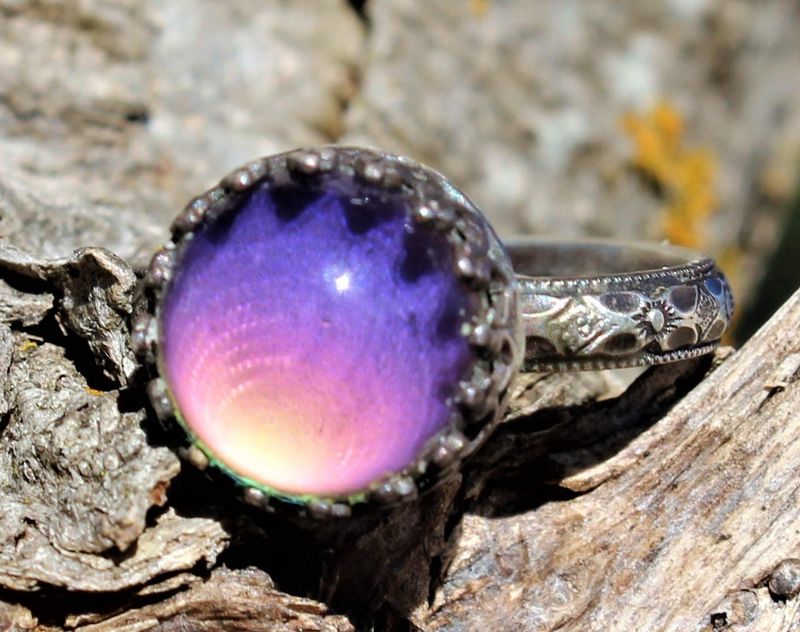
Mood rings were the perfect accessory for a decade obsessed with vibes, auras, and self-discovery. They aligned with the ’70s spirit of exploration, promising a colorful glimpse into one’s inner world.
In those days, personal reflection was practically a pastime. Mood rings became part of that journey, their colors a playful reflection of one’s ever-shifting energies. I remember my own experiments, trying to “will” my ring into changing shades through sheer thought power.
They were more than just jewelry; they were a cultural phenomenon, a symbol of an era that embraced the mystical and the unknown. Mood rings captured the imagination of a generation in search of themselves, offering a touch of magic in a world eager to believe. They remind us of the joy in exploring who we are, one color at a time.
